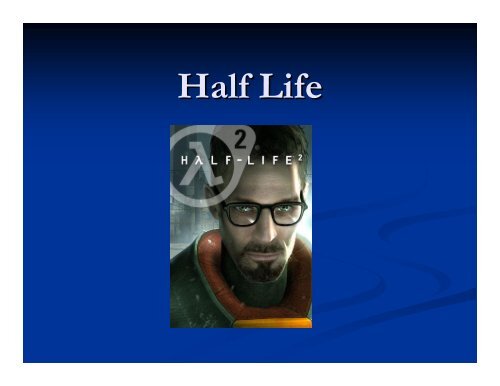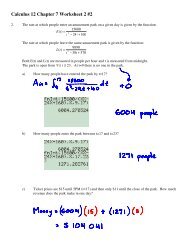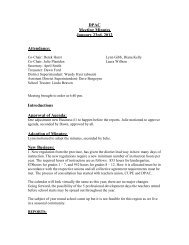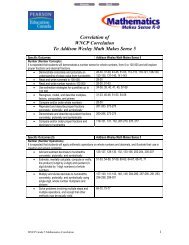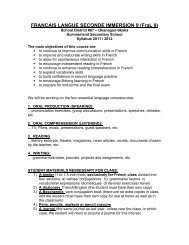7.2 - Half Life
7.2 - Half Life
7.2 - Half Life
Create successful ePaper yourself
Turn your PDF publications into a flip-book with our unique Google optimized e-Paper software.
<strong>Half</strong> <strong>Life</strong>
Radiocarbon Dating<br />
Finding age of object by measuring amount of<br />
carbon-14 remaining<br />
Compare ratio of C-14 C<br />
to C-12C<br />
When an organism dies, C-14 C<br />
decays and is not<br />
replaced
<strong>Half</strong>-life<br />
life<br />
Time required for half the nuclei in a sample to decay<br />
Eg: : Strontium-90 has T 1/2 of 29 years<br />
# half lives<br />
Elapsed time<br />
% Strontium-90<br />
present<br />
Amount<br />
Strontium-90
Decay Curve<br />
Curved line on graph<br />
that shows the rate at<br />
which radioisotopes<br />
decay
Decay Curve<br />
Iodine-131 has T 1/2 of 8 days. If we start with<br />
20g of Iodine-131, how much remains after 24<br />
days?<br />
A sample of rock has 64g of radioisotope. How<br />
much remains after 4 half lives?
Pg 306 #1-4<br />
Practice Problems
Common Isotope Pairs<br />
Parent isotope = undergoes decay<br />
Daughter isotope = stable product of decay<br />
Parent Daughter<br />
Parent isotope decreases, daughter isotope<br />
__________.<br />
Increases
1. What is the ratio of argon-40 to<br />
potassium-40 after two half lives?<br />
2. What is the ratio of argon-40 to<br />
potassium-40 after 3.9 billion years?<br />
3. When there is more parent than daughter<br />
isotope, what does that tell you about the<br />
age of the rock?
Pract-<br />
Pg 311 #6, 7, 9, 10, 11, 12


